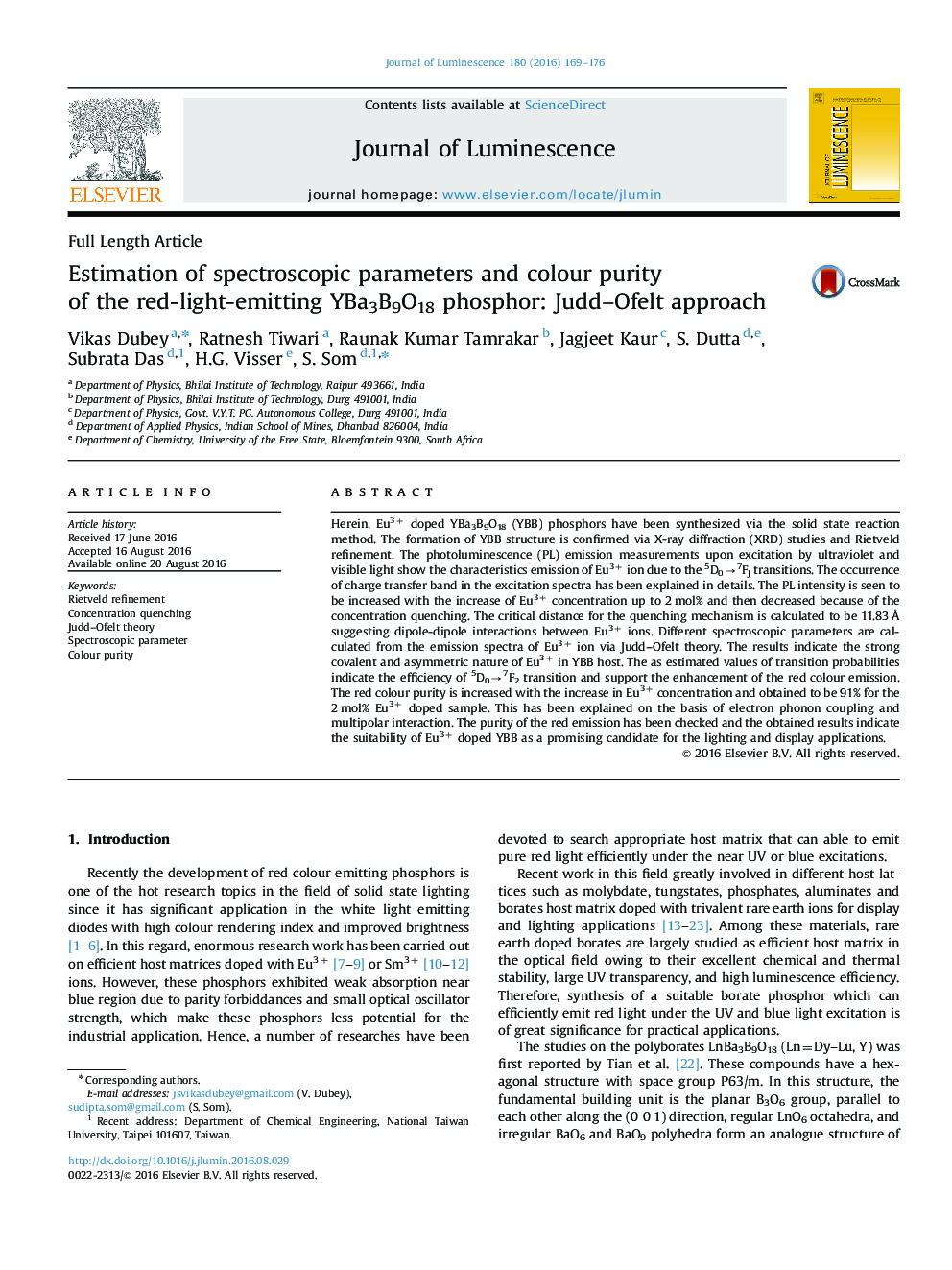| Article ID | Journal | Published Year | Pages | File Type |
|---|---|---|---|---|
| 5398147 | Journal of Luminescence | 2016 | 8 Pages |
Abstract
Herein, Eu3+ doped YBa3B9O18 (YBB) phosphors have been synthesized via the solid state reaction method. The formation of YBB structure is confirmed via X-ray diffraction (XRD) studies and Rietveld refinement. The photoluminescence (PL) emission measurements upon excitation by ultraviolet and visible light show the characteristics emission of Eu3+ ion due to the 5D0â7FJ transitions. The occurrence of charge transfer band in the excitation spectra has been explained in details. The PL intensity is seen to be increased with the increase of Eu3+ concentration up to 2Â mol% and then decreased because of the concentration quenching. The critical distance for the quenching mechanism is calculated to be 11.83Â Ã
suggesting dipole-dipole interactions between Eu3+ ions. Different spectroscopic parameters are calculated from the emission spectra of Eu3+ ion via Judd-Ofelt theory. The results indicate the strong covalent and asymmetric nature of Eu3+ in YBB host. The as estimated values of transition probabilities indicate the efficiency of 5D0â7F2 transition and support the enhancement of the red colour emission. The red colour purity is increased with the increase in Eu3+ concentration and obtained to be 91% for the 2Â mol% Eu3+ doped sample. This has been explained on the basis of electron phonon coupling and multipolar interaction. The purity of the red emission has been checked and the obtained results indicate the suitability of Eu3+ doped YBB as a promising candidate for the lighting and display applications.
Related Topics
Physical Sciences and Engineering
Chemistry
Physical and Theoretical Chemistry
Authors
Vikas Dubey, Ratnesh Tiwari, Raunak Kumar Tamrakar, Jagjeet Kaur, S. Dutta, Subrata Das, H.G. Visser, S. Som,
